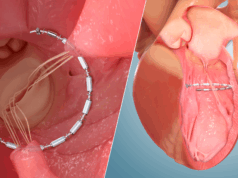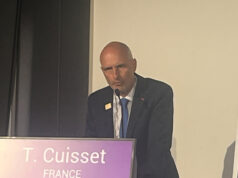 Thirty-six-month follow-up data from the BIOMAG-I first-in-human trial assessing Biotronik’s Freesolve resorbable magnesium scaffold (RMS) have been presented at the 2025 EuroPCR congress (20–23 May, Paris, France).
Thirty-six-month follow-up data from the BIOMAG-I first-in-human trial assessing Biotronik’s Freesolve resorbable magnesium scaffold (RMS) have been presented at the 2025 EuroPCR congress (20–23 May, Paris, France).
Presented by Michael Haude (Rheinland Klinikum, Neuss, Germany), the three-year data demonstrate that the target lesion failure (TLF) rate remained at 3.5%, consisting of four cases of clinically driven target lesion revascularisation (CD-TLR), of which only one event occurred beyond the resorption period of the scaffold. No cases of target-vessel myocardial infarction, cardiac death, or definite/probable scaffold thrombosis occurred.
BIOMAG-I is a prospective, multicentre, single-arm, first-in-human trial conducted in Europe. A total of 116 patients represented with single de novo lesions in up to two coronary arteries were included in the trial. Three-year data were available for 112 patients.
“These outcomes show that Freesolve RMS is a viable therapy option combining both temporary mechanical support and excellent long-term safety,” said Haude. “It was particularly interesting to observe that the TLF rate plateaued after two years. This indicates that the RMS performed as intended: providing temporary vessel support and subsequently disappearing to prevent long-term complications.”
Initial findings from the one-year follow-up of the BIOMAG-I study revealed median late lumen loss of 0.19 mm. Additionally, optical coherence tomography confirmed complete strut resorption of the Freesolve RMS after 12 months.
“We eagerly anticipate RCT data from the international BIOMAG-II trial to further demonstrate Freesolve RMS as a more physiologic alternative to contemporary drug-eluting stents with improved long-term outcomes,” said Georg Nollert, vice president medical affairs, Vascular Intervention at Biotronik. “Given the increasing body of evidence for magnesium scaffolds, we believe the medical community may reconsider the guidelines on revascularisation in the future.”













